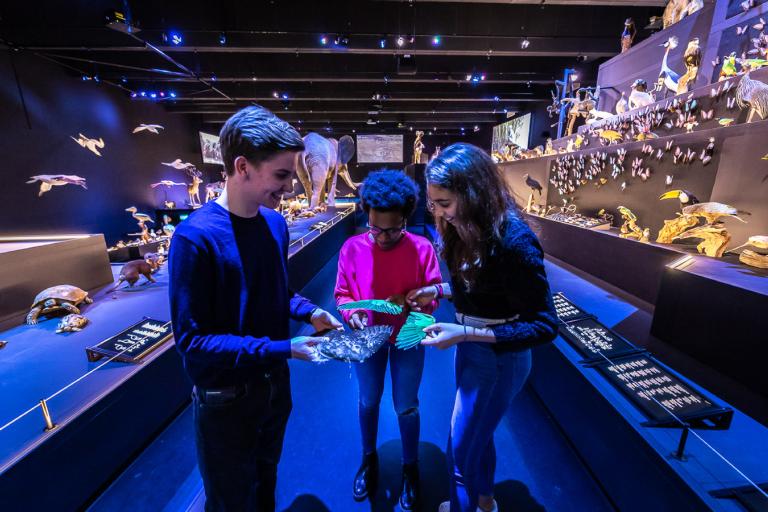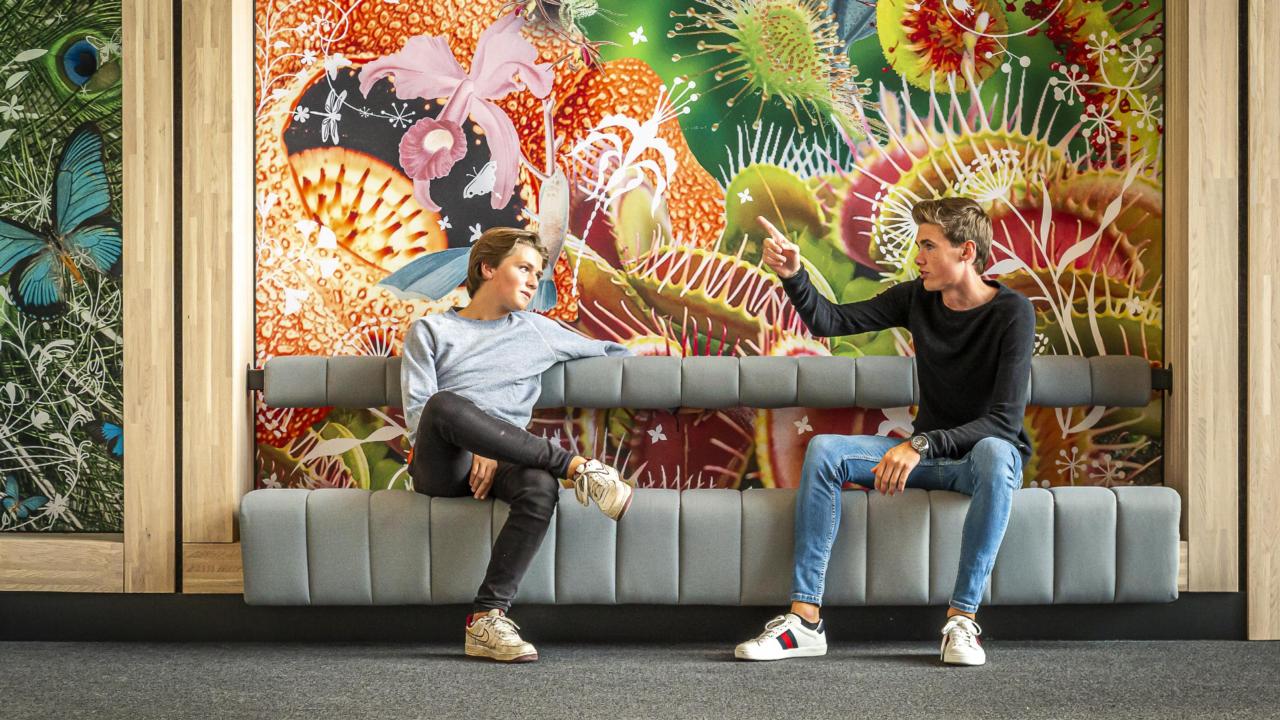
What came first, wings or feathers? In Naturalis, you can find out by looking at present-day animals and fossils of extinct ones, including dinosaurs. Evolution gives animals new properties. Some of these are successful. They offer advantages when moving to new habitats and new food sources or producing offspring and lead to an increase in the number of different species. Discover the origin of distinctive characteristics, such as wings, legs, hairs, feathers and a trunk, and team up to create a comprehensive genealogy of all vertebrates.
Everything you need to knowin a row
- Exhibition program
- Senior general secondary education Years 4 and 5, pre-university education Years 4–6
- Length: 90 minutes
- Number of pupils: no more than 108
- Areas: the "Life", "Dinosaur age" and "Ice age" galleries
- The school supplies: one supervisor for every 20 pupils/students
- Naturalis supplies: two educational assistants
- Pupils/students investigate how vertebrates evolved over time. They discover the origin of distinctive characteristics, such as wings, legs, hairs, feathers and a trunk, and find out why they were successful.
- Keywords: evolution, distinctive characteristic, fish, amphibians, reptiles, birds, mammals, dinosaurs, ice age animals, genealogy
Course of the programat the museum
The program consists of two parts. The schedule given below is an indication only.
0-20 minutes: introduction in reception area
An education assistant will be on hand to welcome the class in the reception area. Classes from different schools may be grouped together for the introduction. This interactive introduction will refresh visitors’ knowledge about the classification of vertebrates. Pupils will play a game that involves putting together a timeline of when vertebrates evolved. They will also practice their skills using extinct animals like T. rex and the mammoth. Pupils are provided with an explanation of the assignment. A time and location will be agreed for the group to meet up after the program has ended. Pupils will enter the museum in pairs or groups of three.
20-50 minutes: in museum
Pupils will complete an exploratory assignment involving a family tree of vertebrates; in doing so, they will see real specimens from different animal groups (some of them extinct).
50-85 minutes: in museum
Pupils will pick up a more in-depth assignment (A3 poster) from the learning cabinet in the “Dino Era” gallery. They will pick a characteristic to analyze, such as the emergence of feathers, legs or hair. There are nine different characteristics to choose from. When you put them all together, the nine research assignments form one big family tree that you can display in your classroom.
85-90 minutes: meet at the agreed location
Pupils gather at the location agreed upon in advance. This is the end of the program.
Booking infoprepare your visit
Everything you need to know about practical matters such as parking, lockers and house rules.
